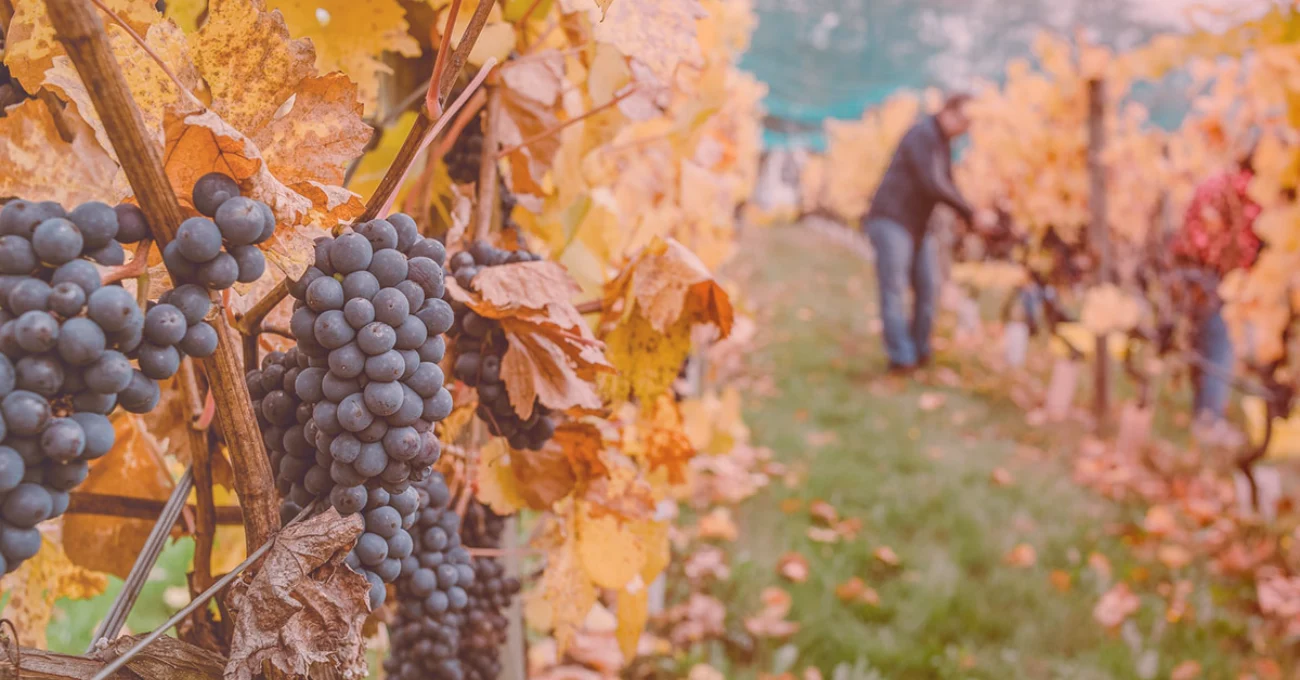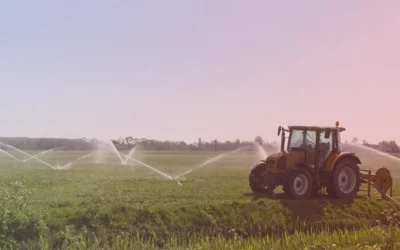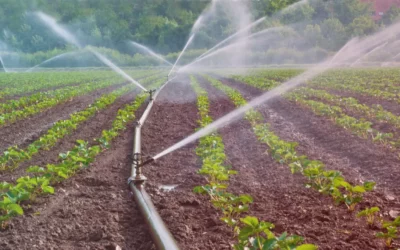How Vineyard Soil Sampling is Key to Wine Production
Soil is a complex mix of nutrients, minerals, water, and air. The ratios of these components determine all the qualities of the soil overall. For wine, good grapes require good soil, but what makes good soil, and which is best for a vineyard?
To find out if the soil is suitable for grapes, regular samples need to be taken. Traditionally this was done manually and the samples were then sent to a lab for analysis. This slow and expensive method is recently being improved upon with the invention of smart devices that can be placed in the soil and send live, continuous feedback for analysis.
However, sampling is only half of the problem. To maximize yield and quality, the results from the samples need to be acted upon accordingly, and the soil needs to be adjusted to the perfect conditions.
So, to understand why vineyard soil sampling is so important, it’s necessary to understand why soil is so important.
The role of soil in winemaking
Grapevines are diverse and widespread across the planet. There are around 60-80 species of grapevine and over ten thousand different wine grape varieties. This range is a result of multiple adaptations to different climates and soil conditions, and as such, different grapevines prefer different qualities.
When it comes to soil, there are two main ways in which it affects the health of a vineyard, and therefore the quality of the grape for winemaking.
1. Preparation – Soil preparation is important to create optimal conditions for the grapevines. This is the manual work that goes into plowing, leveling, and weeding, as well as making measured adjustments to mineral, fertilization and moisture content based on the analyses of samples taken from the soil.
For new vineyards, it may take a year or two to prepare the soil for planting and throughout its life, the grapevine’s substrate needs to be measured and maintained at optimal pH, water, and nutrient levels.
Poor preparation of the soil can hinder growth and lessen yield and quality, even with good quality soils.
2. Content – This is the composition of the soil itself. Typically, the soil is made up of about half mineral components. The other half is split almost equally between air and water, with a little organic matter mixed in.
The ratio of air and water will be affected by the properties of these minerals, and the nutrient quality of the soil is affected by the properties and amount of the organic matter, as well as by the air and water-retention properties of the mineral component. All factors in soil quality affect each other, which is why soil is so diverse and unique in different areas, and why soil sampling is so important.
Mineral particles are divided into three categories by size: clay, silt, and sand. Soils therefore can be loosely differentiated by the ratios of these minerals present. This way, they are broken down into four major categories.
The big four soil types
- Clay Soil – Clay is made up of the smallest of the mineral particles. Due to their size, they let much less water through than larger particles, which reduces drainage in the soil. They’re also acidic and densely packed, making clay soil heavy to work on. This density contributes to good thermal stability, which is a benefit in extreme temperature zones. Grapevines that prefer clay soils benefit from increased potassium which affects the flavor of grapes by aiding in the conversion of starches to sugars.
- Silt Soil – These particles are larger than clay, so they allow for more drainage but still maintain water and air retention. This can be a good or a bad property, depending on the weather conditions, but one thing that’s fairly consistent with silt soils is their fertility. This may sound like a positive when growing anything in soil, but many grape varieties actually do better in soils with lower fertility.
- Sandy Soil – Sand is the coarser particle of the three, continuing the trend of increased drainage and air pockets. Grapevines often love sandy soil for this reason, but they can be vulnerable to drying out in hot weather. Sandy soils also have low fertility, so this can be adjusted by adding compost if the plant requires a boost.
- Loamy Soil – When you combine all three particle types into one soil, you get loam. This is a good all-rounder for grapevines and is a common choice for vineyards because of it. A good balance between sand, silt, and clay leads to optimal water and air retention, good drainage, and a healthy amount of organic matter. This is also soil that can be useful in a wide range of climates. However, the nutrient content of loam soils can sometimes be a little high for the vineyard’s requirements.
The best soil for wine grapes
The above is a simplified overview of soil types, but in reality, there are mineral components much larger than sand and other fine minerals like chalk and limestone that bring with them more unique properties. When all the variables are considered, there are innumerable variations available in soils, and each one affects the final product in unique ways. But is there one that is best for grapes?
Here’s a brief look at some of the other soil types found in vineyards across the world.
- Gravel – this is a step up from sand. Very large particles create exceptional drainage and almost no water retention. The large rocks force grapevines to use deep roots to find water and retain heat during cold spells. Gravel also doesn’t hold on to much organic matter, so the soil is relatively infertile. Some French wines are made in gravel, such as Cabernet.
- Alluvial – Dried river beds are great places to find this rich mix of minerals. Rivers deposit gravel, sand, silt, and clay along with a lot of organic matter, and grapes that are grown in Mendoza and the Napa Valley are often making use of this heady mix of sediment sizes.
- MARL – Bordeaux wines are sometimes products of this mix of clay and limestone. Limestone-rich clay soils are said to produce exceptionally bold red and white wines all over the world. Limestone helps provide favorable nutrients to grapes, making them sweeter, and also contributes to drainage and water retention.
- Flint – This rock holds onto heat well during cold spells and is thought to affect the flavor of the grapes grown on it, giving them a smoky essence. The heat retention allows grapevines to grow in colder climates than they would be able to otherwise.
There are hundreds more soil types to consider, each with its own unique contribution to the grape. Which one is the best soil for wine grapes will depend on the region, the grape variety, and personal preference.
So, there’s no single soil quality that’s suitable for all grapes. One thing that is true for all vineyard soils, however, is the importance of regular and reliable soil sampling.
Vineyard soil sampling
With all these variables in soil across the multitude of soil types, it’s clear why sampling is important to good wine production. Soils are ever-changing and dynamic, so it’s necessary to keep track of how they evolve over time in order to adjust the qualities back into the optimal range. Among other things, soil sampling makes it possible to:
- Adjust fertility – soil sampling will allow growers to measure the nutrient quality of the soil. In infertile soils like sands and gravels, this might involve increasing organic material to reach the optimal fertility for the specific grape variety. In loamy or silt soils, fertility may even be too high and can be reduced by introducing cover crops.
- Adjust pH – Usually, a slightly-acidic range of about pH5.5 to 6.5 is ideal, and soils with a low pH can be adjusted with limestone. To bring the pH down from too basic, acidity can be increased with sulphuric compounds such as ammonium sulfate.
- Correct Drainage – soil sampling or monitoring can alert growers to drainage patterns. If there is more water retention or drainage than desired, this can easily be corrected by incorporating more of the appropriate mineral; sand, silt, or clay.
- Control Temperature – Finally, temperature monitoring allows growers very accurate and detailed control of their vineyard soil conditions. Planting the right vine at the right time requires an understanding of the soil temperature and how it changes over time. These data may also lead to decisions around adjusting the thermal retention properties of the soil by adding gravel or limestone.
Basic principles of soil sampling
Once the desired soil type is established, there is a further need for soil sampling to maintain it. Manual sampling two or more times a year keeps track of changes in soil conditions, which can be attributed to rainfall and nutrient absorption, and other local weather patterns.
Soil monitoring can keep track of water retention in the soil to help design intelligently-timed irrigation schedules.
Sampling the soil will also create a detailed profile of the most important components of the soil, including its NPK, Nitrogen, Potassium, Boron, and Zinc content, all of which can be readjusted to optimal levels if necessary.
Samples can be taken manually, and samples analyzed at a lab, or in many cases can be continuous, with monitoring devices permanently placed in the soil that sends data to the cloud for analysis by intelligent algorithms.
Conclusion
There is no single best soil for wine grapes. The soils used in winemaking are almost infinitely variable and impart unique qualities on whichever specially-adapted variety is grown in them. As such, each vineyard needs to develop its unique soil profile, and it does this with regular vineyard soil sampling and analysis.
Sampling can be done manually, two or three times a year, or continuously through modern smart devices and monitoring systems. These new advancements in sampling technologies allow greater control over soil conditions than ever before and are key to modern-day wine production.
——
Benchmark Labs represents the future of commercial environmental forecasting. We provide growers with live alerts to act upon quickly and delivers highly-accurate, localized weather forecasting from remote sensors on the vineyard. Sign up here to learn more.
Recent Posts
Benchmark Labs Launches In-Situ Evapotranspiration Forecasts
Benchmark Labs the leading provider of AI & IoT-driven weather forecasting solutions for the agriculture, energy, and insurance sectors is pleased to announce the global launch of their in-situ evapotranspiration forecasting technology. We previously talked about...
Modern Methods of Water Management in Organic Farming for 2022
[dssb_sharing_button icon_bg="#636979" _builder_version="4.16" _module_preset="default" background_color="#324155"...
Factors Influencing Evapotranspiration and How to Measure it with AI
[dssb_sharing_button icon_bg="#636979" _builder_version="4.16" _module_preset="default" background_color="#324155"...




